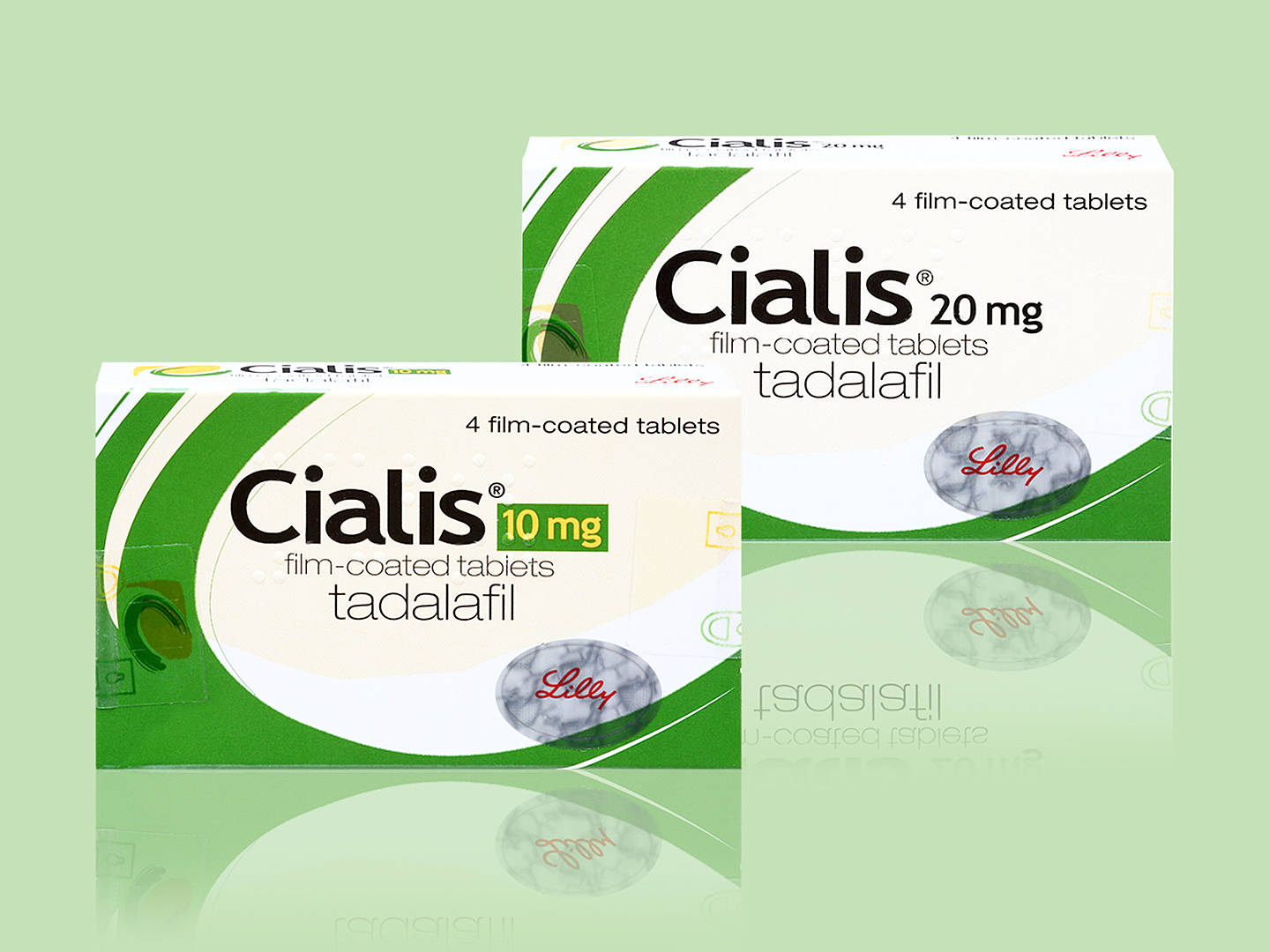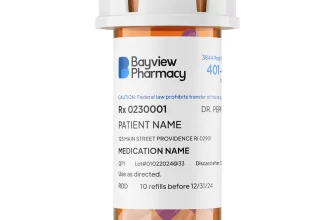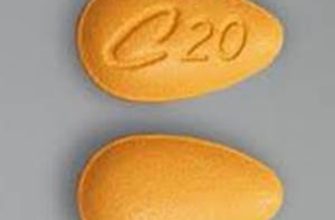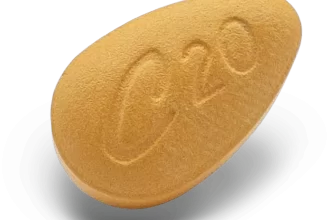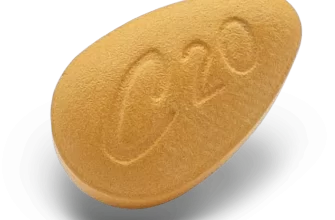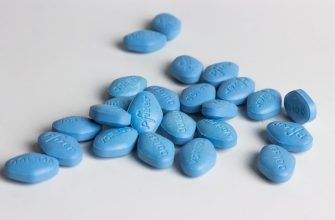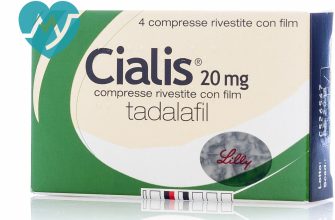Start with 5mg. This lower dose allows your body to adjust gradually, minimizing potential side effects. Many men find 5mg sufficient for achieving and maintaining erections. It’s a smart starting point for most individuals.
Consider a higher dose (20mg) only if 5mg proves insufficient after consistent use. Your doctor will guide you based on your individual response and medical history. Increased dosage isn’t always better; it can lead to more intense side effects.
Remember: Dosage is personalized. Factors such as age, overall health, and other medications influence the optimal dose. Always consult a healthcare professional before adjusting your Cialis dosage. They can assess your specific needs and help you make an informed decision.
Key takeaway: Begin with 5mg and adjust only under medical supervision. This approach prioritizes both efficacy and safety.
- Cialis 5mg or 20mg: Choosing the Right Dosage
- Factors Influencing Dosage
- Dosage Adjustments
- Understanding the Difference: 5mg vs 20mg
- Daily vs. As-Needed Use
- Consider Your Health
- Dosage Adjustment
- Choosing the Right Dosage for Your Needs
- Understanding Dosage Adjustments
- Factors Influencing Dosage
- Monitoring Your Response
- Side Effects and Precautions
- Common Side Effects
- Less Common but Serious Side Effects
- Precautions
- Dosage Considerations
- Cost and Accessibility
- Insurance Coverage
- Finding Affordable Options
Cialis 5mg or 20mg: Choosing the Right Dosage
Start with the lowest dose, 5mg, unless your doctor advises otherwise. This allows your body to adjust and minimizes potential side effects. Many men find 5mg sufficient for achieving satisfactory results. If you don’t experience the desired effect after a few attempts, your doctor can then increase the dosage to 10mg or 20mg.
Factors Influencing Dosage
Your doctor considers several factors when determining the appropriate Cialis dosage. These include your age, overall health, other medications you’re taking, and the severity of your erectile dysfunction. Liver or kidney problems can also influence the dosage. Open communication with your doctor is key to finding the right fit for your individual needs. Don’t hesitate to discuss any concerns or questions you may have regarding potential side effects or treatment efficacy.
Dosage Adjustments
Dosage adjustments aren’t always straightforward. Your doctor might suggest trying different dosages over several weeks to observe the effects. It’s not a one-size-fits-all solution, and finding the optimal dose might require some trial and error, guided by your doctor’s expertise. Remember that regular follow-up appointments are important to monitor your progress and ensure the treatment remains safe and effective.
Understanding the Difference: 5mg vs 20mg
Choose the dosage based on your individual needs and your doctor’s recommendations. The 5mg dose is typically prescribed for daily use, maintaining a consistent level of tadalafil in your system. This approach may improve erectile function and help with symptoms of benign prostatic hyperplasia (BPH) over time. The 20mg dose, usually taken as needed, provides a stronger, more immediate effect, typically effective within 30-60 minutes, and lasting up to 36 hours.
Daily vs. As-Needed Use
Daily Use (5mg): This offers consistent blood flow improvement, potentially beneficial for both ED and BPH symptoms. Expect a gradual improvement over several days or weeks, not an immediate impact. It allows for spontaneity without needing to plan around timing.
As-Needed Use (20mg): This provides a quicker, more intense effect for specific sexual encounters. It’s not meant for daily consumption. Remember to consult your physician for dosage adjustments and to address potential side effects.
Consider Your Health
Individual Responses Vary: People respond differently to medication. What works well for one person might not be optimal for another. Openly discuss your experience with your doctor.
Underlying Health Conditions: Your health status, including any pre-existing conditions and medications you take, plays a significant role in determining the appropriate Cialis dosage.
Dosage Adjustment
Your doctor will assess your specific circumstances to guide you toward the safest and most effective dose. Do not adjust your dosage without professional medical advice. Changes in your health or medication can necessitate a dose change.
Choosing the Right Dosage for Your Needs
Start with the lowest dose, 5mg, unless your doctor directs otherwise. This allows your body to adjust gradually. Many men find 5mg sufficient for their needs.
Understanding Dosage Adjustments
If 5mg proves ineffective, your doctor might suggest increasing to 10mg or 20mg. However, jumping directly to 20mg isn’t generally recommended initially. Increasing in smaller increments allows for better monitoring of side effects.
Conversely, if you experience side effects on 5mg, reducing the dose or adjusting the timing of intake might be considered. Communication with your doctor is paramount here.
Factors Influencing Dosage
Several factors influence the optimal dosage, including your age, overall health, and the severity of your symptoms. Your doctor will take these into account when determining your starting point.
Important Note: Never adjust your dosage without first consulting your doctor. Improper use may lead to unwanted side effects or reduced efficacy. They can help you find the right balance between efficacy and tolerability.
Monitoring Your Response
Regularly monitor how the medication affects you. Note any improvements or side effects, and communicate these to your physician at your next appointment.
Remember, finding the correct dosage is a collaborative process with your doctor. Open communication is key to achieving the best results.
Side Effects and Precautions
Always consult your doctor before starting Cialis, regardless of dosage. They can assess your health and determine the appropriate dose for you.
Common Side Effects
- Headache
- Facial flushing
- Muscle aches
- Nasal congestion
- Indigestion
- Back pain
These side effects are usually mild and temporary. If they persist or worsen, contact your doctor.
Less Common but Serious Side Effects
Seek immediate medical attention if you experience:
- Sudden vision loss
- Sudden hearing loss
- Prolonged and painful erection (priapism)
- Chest pain
- Irregular heartbeat
These are rare but serious potential side effects requiring prompt medical intervention.
Precautions
- Heart Conditions: Cialis can affect blood pressure; discuss its use with your doctor if you have heart problems.
- Liver and Kidney Disease: Dosage adjustments may be necessary if you have liver or kidney impairment.
- Other Medications: Inform your doctor about all medications you are taking, as interactions can occur.
- Alcohol: Combining Cialis with alcohol can increase the risk of side effects.
- Grapefruit Juice: Avoid grapefruit juice, as it can interfere with Cialis metabolism.
Dosage Considerations
The choice between 5mg and 20mg depends on individual factors, including response to treatment and potential side effects. Your doctor will guide you on the most suitable dosage.
Remember, this information is not a substitute for professional medical advice. Always discuss your health concerns with your doctor or pharmacist.
Cost and Accessibility
The price of Cialis varies significantly depending on your location, insurance coverage, and the pharmacy you choose. Generic tadalafil, the active ingredient in Cialis, is generally much cheaper than brand-name Cialis. Expect to pay more for higher dosages; a 20mg tablet typically costs more than a 5mg tablet. Online pharmacies often offer competitive prices, but always verify their legitimacy before making a purchase. Compare prices across multiple reputable pharmacies to find the best deal.
Insurance Coverage
Many insurance plans cover Cialis, particularly for patients with diagnosed erectile dysfunction. However, prior authorization may be required, adding time to the process. Check with your insurance provider to determine your specific coverage and any necessary steps to obtain the medication. Consider exploring patient assistance programs offered by the manufacturer or other organizations if you face financial barriers.
Finding Affordable Options
Consider using a prescription discount card or coupon to lower out-of-pocket expenses at your local pharmacy. These can often reduce the cost, even with insurance. Also, exploring mail-order pharmacies may offer savings on larger quantities of medication. Remember to prioritize safety and only use licensed and reputable pharmacies to ensure the medication’s authenticity and safety.

